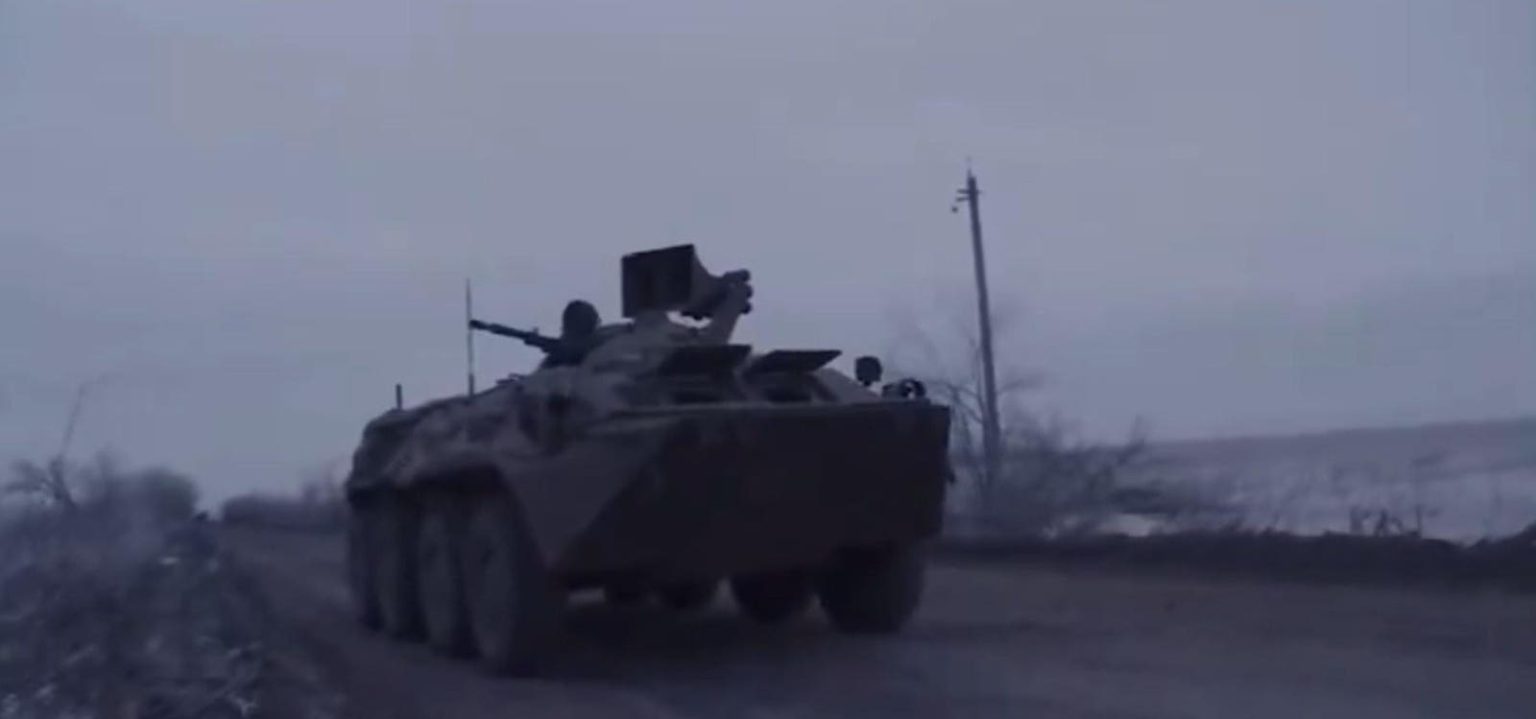As the grueling, four-month battle for the industrial city of Avdiivka in eastern Ukraine culminated in mid-February, the Russian armed forces—which up to that point mostly had relied on glide-bombs, artillery and infantry-first “meat assaults” to soften the Ukrainian garrison—tried something different.
They rolled a ZS-88 psychological-operations vehicle toward the ruined city and broadcast a message to the exhausted Ukrainians, presumably from the 110th Mechanized Brigade.
“There is no point in resisting,” was the message from the loudspeakers on the ZS-88, a variant of the wheeled BTR-80 fighting vehicle. “Your fathers and grandfathers didn’t fight for the power of neo-Nazis in Ukraine today.”
To be clear, Ukraine isn’t led by fascists. Russia, by contrast, is governed far-right authoritarian ultranationalists. That is, fascists.
The Avdiivka loudspeaker psyop apparently didn’t work. The Russians captured an estimated 200 Ukrainians in and around Avdiivka, but not because the Ukrainians threw down their weapons, waved white flags and answered the ZS-88’s siren call.
When the 110th Brigade, increasingly starved of ammunition after Russia-friendly Republicans in the U.S. Congress cut off aid, finally retreated to the west under the cover of the elite 3rd Assault Brigade, a few of its troopers got overrun by the advancing Russians: some while trying to make their escape, others while wounded and immobilized.
The Russians summarily executed several of their new captives. Which might help to explain why the Ukrainians so steadfastly ignored the ZS-88’s broadcast and other Russian psyops.
Successful psyops, such as the U.S. military’s radio-and-leaflet campaign in Kuwait and Iraq in 1991—which helped to convince 100,000 or more outgunned Iraqi troops to surrender—hinge on what U.S. Air Force officers Frank Goldstein and Daniel Jacobowitz described as “the humane actions of EPW teams” that receive and care for enemy prisoners of war.
Both sides in Russia’s 25-month war of aggression in Ukraine have mistreated prisoners, but the Russians in particular are notorious for shooting defeated Ukrainians as they try to surrender, and starving the Ukrainians in captivity if they don’t just shoot them. No one would describe Russian EPW teams as “humane.”
That might help to explain why there are just 4,000 Ukrainian POWs in captivity in Russia—a low number given that a million Ukrainians are under arms, hundreds of thousands of them in front-line roles.
Ukraine, for its part, is holding “thousands” of Russians—out of a front-line Russian force numbering around half a million—in prison-style facilities that occasionally welcome reporters, and where one of the major complaints is the lack of salt in the food.
Probably more than 400,000 Russians and 200,000 Ukrainians have been killed or wounded in Ukraine. Counting prisoners that both sides have exchanged, it seems there have been two or so POWs for every 100 casualties in the Russia-Ukraine war.
Compare that to World War II. More than 130,000 Americans became prisoners of war in that conflict, while around 1.1 million were killed or wounded. In other words, there was a POW for every eight casualties.
When surrendering might mean dying, as it has for some Russians and even more Ukrainians, soldiers may tend to fight to the death rather than give up. Thus the ZS-88 crew around Avdiivka probably was wasting its time—and risking death—for nothing. Ukrainian forces have knocked out and apparently captured at least one of the loudspeaker vehicles.
That loudspeaker ops haven’t worked very well in Ukraine surely wouldn’t surprise Goldstein and Jacobowitz. For as successful as American psyops were in the 1991 Gulf War, loudspeaker broadcasts in that war “generally produced moderate effectiveness in terms of audience exposure, persuasiveness and impact on surrender.”
According to Goldstein and Jacobowitz, in 1991 leaflets and radio messages told demoralized Iraqis how to surrender; loudspeakers just told them where to surrender. But it’s apparent Russian and especially Ukrainian soldiers—no matter how defeated—aren’t exactly looking around for the best place to turn themselves over to the enemy.
Sources:
1. AFV Recognition: https://twitter.com/AFVRec_/status/1758974831846953469
2. Frank Goldstein & Daniel Jacobowitz: https://www.hqmc.marines.mil/Portals/147/Docs/MCIOC/IORecruiting/PsychologicalOperationsGoldstein.pdf
3. Human Rights Watch: https://www.hrw.org/reports/1991/IRAQ391.htm
4. The Guardian: https://www.theguardian.com/world/2024/jan/03/ukraine-russia-prisoners-of-war-pows-swap-exchange-deal-uae
5. The Atlantic: https://www.theatlantic.com/international/archive/2014/05/why-there-are-so-few-pows-from-todays-wars/371951/
6. Military.com: https://www.military.com/daily-news/2024/01/12/inside-pow-camp-russian-soldiers-ukraine.html
7. Rob Lee: https://twitter.com/RALee85/status/1601265330088972290
8. Reuters: https://www.reuters.com/world/europe/ukraine-accuses-russia-executing-injured-prisoners-avdiivka-vesele-2024-02-18/
Read the full article here





